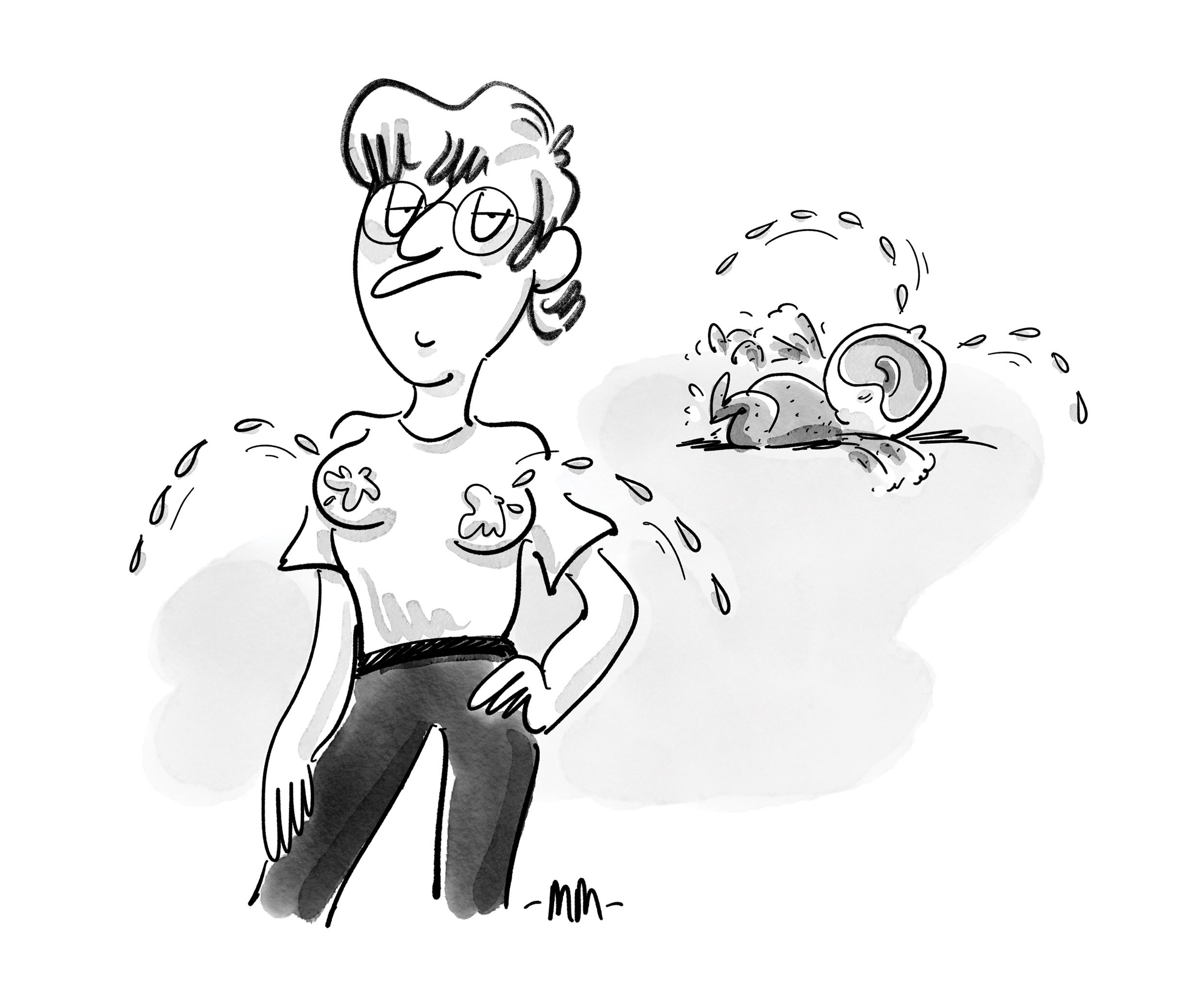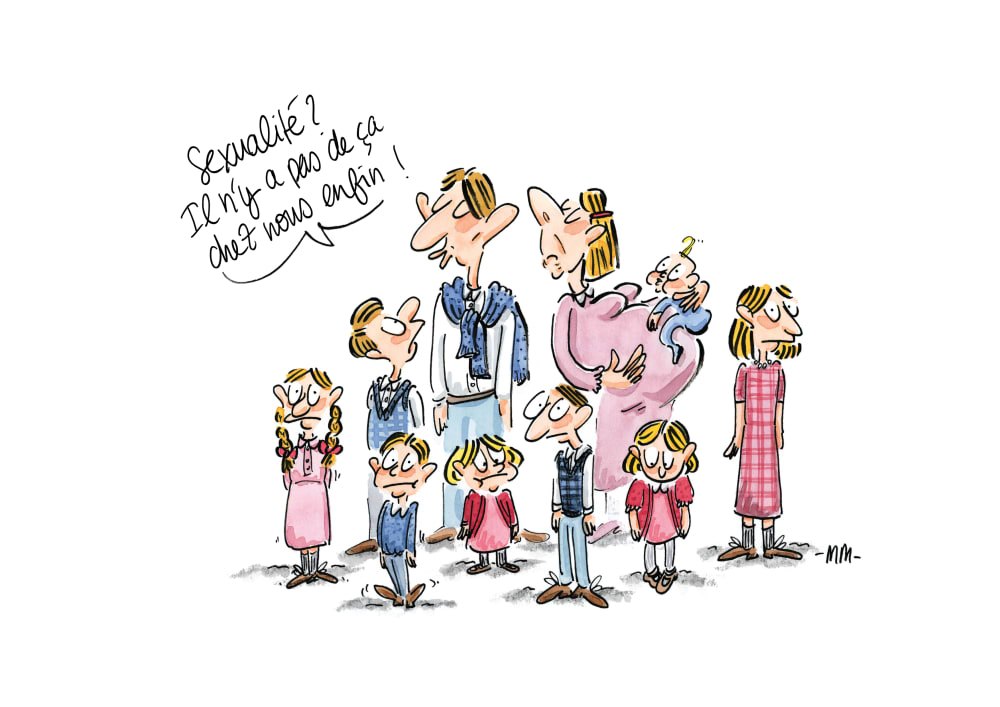
Meet: Marie Morelle

- Written byEleanor Harvey
- Published date 28 October 2024

Marie Morelle is an illustrator and cartoonist, who’s love of drawing stems from childhood. As well as growing up in a creative household, she recalls seeing old-fashion anthropomorphic illustrations and immediately thinking, “I could this better!”.
Her work focuses on people, and how by observing them it becomes impossible to ignore injustices going on in the world, “just watching the world around me, and the people within it, naturally drives me to address these issues in my work.”
Marie graduated from Camberwell College of Arts in 2009, having completed her BA (Hons) Illustration. She’s gone on to have her work published in ELLE and Le Monde.
She spoke to us about the highs and lows of being an illustrator, and how not all careers are a straight line.

You graduated from Camberwell College of Arts in 2009. What did you enjoy about studying BA Illustration?
Everything! I loved the complete freedom of artistic expression. The teaching I received was radically different from what I’d have had in France, where art school teachers were more likely to focus on teaching you how to use an HB pencil to draw from observation, adhering to a specific technique. At Camberwell, in the BA Illustration program, you weren’t taught 'how to draw' because you were accepted based on your own unique way of expressing yourself. Instead, you were encouraged to explore and push even further along whatever creative path you wanted to pursue.
But what made this journey truly special, however, was the relationship and trust I developed with my various tutors. Some pushed me out of my comfort zone, encouraging me to explore new avenues of abstraction, while others reinforced my strengths, helping me to build confidence in my abilities.

What was the highlight of your experience of studying at Camberwell?
At that time, I was struggling with a severe lack of confidence and felt very vulnerable. So I was very surprised when my tutor Geoff Coupland seemed to take a genuine interest in my work.
I truly believe that the confidence he put in me helped shape who I am today, professionally. Back then, I was completely lost and had no idea which creative path to pursue. But Geoff wisely advised me to simply focus on doing what I enjoyed the most! It may seem obvious to some, but for me, it was invaluable advice. Fifteen years later, it still allows me to feel fulfilled and happy every day at work. But mostly, I believe that the best work comes out when you're having fun!


What drew you to illustration initially?
My mum, Ewa Karpinska, is a renowned watercolourist, so I was raised in an artistic environment. When I was old enough to hold a book, I remember being captivated by certain illustrations, such as those by Serge Bloch, Franquin or Peyo. However, whenever I came across some old-fashioned anthropomorphic illustrations, I felt physical disgust and thought, ‘I want to do better!’
Then, around the age of 15, my mum gave me ‘Drawing for the Artistically Undiscovered’ by Quentin Blake. The way he taught, encouraging you to free your hand, have fun with drawing, and not fear mistakes, was a total revelation for me. I absolutely loved the freedom in his style. I meticulously studied and copied each of his drawings, trying to understand how he conveyed such a vibrant sense of movement and joy. From that moment, I knew I wanted to become an illustrator.
What do you think makes a good cartoon?
Ha! That’s a tricky question, because what makes a good cartoon for me isn’t necessarily the same for everyone else.
For me, a cartoon really works when it makes me laugh, even if it’s a bitter or uneasy laugh. There are objectively brilliant cartoons that use deep symbolism, are poetic, and convey heavy messages — but they’re just not my cup of tea. I believe life already comes with its fair share of difficulties, so I don’t always see the need to add more pathos.
So, for me, laughter is key.
But the best description I’ve ever come across is from Tignous: "A good cartoon should make you laugh. It’s even better when it makes you think. When it manages to make you laugh and think at the same time, it’s perfect. And if the reader feels a sense of shame for having laughed, that’s the pinnacle."


What inspires you?
People — the way they behave and interact — fascinate me. Observing them makes it impossible to ignore injustices, particularly those directed at women and minorities. Just watching the world around me, and the people within it, naturally drives me to address these issues in my work.
Motherhood is another powerful source of inspiration for me, for two reasons. First, my daughter is incredibly funny! She is a constant well of inspiration —children are so pure in their reactions! Secondly, becoming a mother made me realise how deeply ingrained some of my own misogynistic thoughts and behaviours were, even though I considered myself a feminist.
Motherhood changes every aspect of one’s life, and I feel compelled to express that transformation through my art, especially since it remains a somewhat taboo topic in our society. As soon as you talk about motherhood, you’re labelled a 'housewife,' as though there was something shameful about discussing it. I want to address these topics, so we become more accustomed to them and break that taboo.
What’s your favourite aspect of your work and what’s something that you find challenging?
At first, I’d say that my favourite part of my work is making people laugh while also raising awareness on important issues or expanding their perspective. But what really makes it exhilarating is that when I witness situations or injustices that become unbearable, I have this incredible opportunity to express it through a drawing and get it published. It gives me the (perhaps naive, but I like naive) feeling that my work might be able to change even the smallest thing in people's minds.
The most challenging aspect : I can’t decide whether it’s the financial issues stemming from the current state of the press, or the constantly shifting landscape of Macron's government, which requires us to learn how to caricature new faces almost every day?


What advice would you give to students who have just graduated?
When I graduated, I felt completely drained of all my artistic resources. At that time, I was also dealing with personal issues, which didn’t help, and I fell into a period of depression. For several years, I was unable to draw and took on small graphic jobs to make a living.
Just when I had almost lost hope, I felt a desire to mock my silly moments, and I started a blog. Friends of friends began encouraging me at parties, telling me to keep going because they loved it. So, I did, just for fun. Eventually, my work caught the attention of ELLE magazine in Belgium, which led to illustrating a book for them. Several years later, I contributed monthly cartoons for a few years. A few years after that, I even found myself on the front page of Le Monde...
So even if your path isn’t a straight line, don’t panic focus on your strengths and have fun; the rest will follow naturally!
Connect with Marie:
- Website: marie-morelle.com
- Instagram: _mariemorelle_
